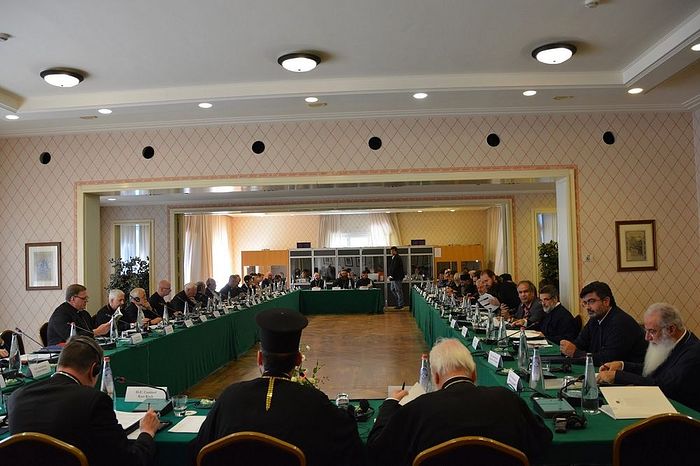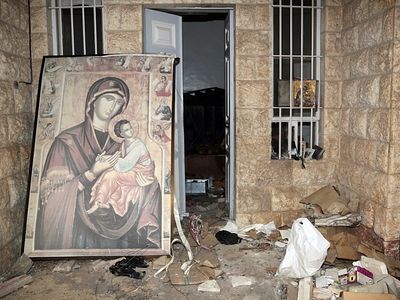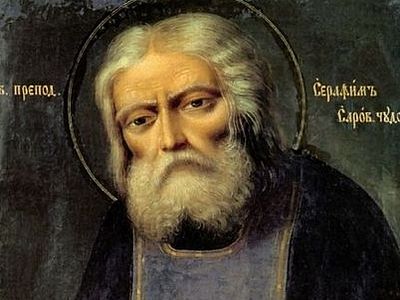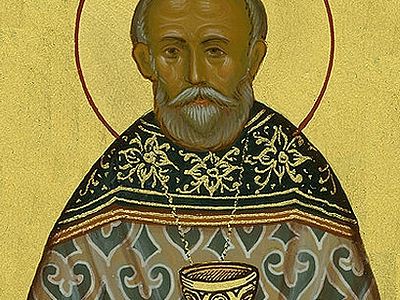Source: Pan-Orthodox Synod
September 23, 2016
From the fourteenth meeting of the Joint International Commission for Theological Dialogue between the Roman Catholic Church and the Orthodox Church, Chieti, 21 September 2016
‘We declare to you what we have seen and heard so that you also may have communion [koinonia] with us; and truly our communion [koinonia] is with the Father and with his Son Jesus Christ. We are writing these things so that our joy may be complete.’ (1Jn 1:3-4)
1. Ecclesial communion arises directly from the Incarnation of the eternal Word of God, according to the goodwill (eudokia) of the Father, through the Holy Spirit. Christ, having come on earth, founded the Church as his body (cf. 1Cor 12:12-27). The unity that exists among the Persons of the Trinity is reflected in the communion (koinonia) of the members of the Church with one another. Thus, as St Maximus the Confessor affirmed, the Church is an ‘eikon’ of the Holy Trinity.[1] At the Last Supper, Jesus Christ prayed to his Father: ‘Protect them in your name that you have given me, so that they may be one, as we are one’ (Jn 17:11). This Trinitarian unity is manifested in the Holy Eucharist, wherein the Church prays to God the Father through Jesus Christ in the Holy Spirit.
2. From earliest times, the one Church existed as many local churches. The communion (koinonia) of the Holy Spirit (cf. 2Cor 13:13) was experienced both within each local church and in the relations between them as a unity in diversity. Under the guidance of the Spirit (cf. Jn 16:13), the Church developed patterns of order and various practices in accordance with its nature as ‘a people brought into unity from the unity of the Father, the Son and the Holy Spirit’.[2]
3. Synodality is a fundamental quality of the Church as a whole. As St John Chrysostom said: ‘“Church” means both gathering [systema] and synod [synodos]’.[3] The term comes from the word ‘council’ (synodos in Greek, concilium in Latin), which primarily denotes a gathering of bishops, under the guidance of the Holy Spirit, for common deliberation and action in caring for the Church. Broadly, it refers to the active participation of all the faithful in the life and mission of the Church.
4. The term primacy refers to being the first (primus, protos). In the Church, primacy belongs to her Head – Jesus Christ, ‘who is the beginning, the firstborn from the dead; that in all things he might have the pre-eminence [protevon]’ (Col. 1:18). Christian Tradition makes it clear that, within the synodal life of the Church at various levels, a bishop has been acknowledged as the ‘first’. Jesus Christ associates this being ‘first’ with service (diakonia): ‘Whoever wants to be first must be last of all and servant of all’ (Mk 9:35).
5. In the second millennium, communion was broken between East and West. Many efforts have been made to restore communion between Catholics and Orthodox, but they have not succeeded. The Joint International Commission for Theological Dialogue between the Roman Catholic Church and the Orthodox Church, in its ongoing work to overcome theological divergences, has been considering the relationship between synodality and primacy in the life of the Church. Different understandings of these realities played a significant role in the division between Orthodox and Catholics. It is, therefore, essential to seek to establish a common understanding of these interrelated, complementary and inseparable realities.
6. In order to achieve this common understanding of primacy and synodality, it is necessary to reflect upon history. God reveals himself in history. It is particularly important to undertake together a theological reading of the history of the Church’s liturgy, spirituality, institutions and canons, which always have a theological dimension.
7. The history of the Church in the first millennium is decisive. Despite certain temporary ruptures, Christians from East and West lived in communion during that time, and, within that context, the essential structures of the Church were constituted. The relationship between synodality and primacy took various forms, which can give vital guidance to Orthodox and Catholics in their efforts to restore full communion today.
The Local Church
8. The one, holy, catholic and apostolic Church of which Christ is the head is present in the eucharistic synaxis of a local church under its bishop. He is the one who presides (the ‘proestos’). In the liturgical synaxis, the bishop makes visible the presence of Jesus Christ. In the local church (i.e. a diocese), the many faithful and clergy under the one bishop are united with one another in Christ, and are in communion with him in every aspect of the life of the Church, most especially in the celebration of the Eucharist. As St Ignatius of Antioch taught: ‘where the bishop is, there let all the people be, just as, where Jesus Christ is, we have the catholic church [katholike ekklesia]’.[4] Each local church celebrates in communion with all other local churches which confess the true faith and celebrate the same Eucharist. When a presbyter presides at the Eucharist, the local bishop is always commemorated as a sign of the unity of the local church. In the Eucharist, the proestos and the community are interdependent: the community cannot celebrate the Eucharist without a proestos, and the proestos, in turn, must celebrate with a community.
9. This interrelatedness between the proestos or bishop
and the community is a constitutive element of the life of
the local church. Together with the clergy, who are
associated with his ministry, the local bishop acts in the
midst of the faithful, who are Christ’s flock, as
guarantor and servant of unity. As successor of the
Apostles, he exercises his mission as one of service and
love, shepherding his community, and leading it, as its
head, to ever-deeper unity with Christ in the truth,
maintaining the apostolic faith through the preaching of
the Gospel and the celebration of the sacraments.
10. Since the bishop is the head of his local church, he
represents his church to other local churches and in the
communion of all the churches. Likewise, he makes that
communion present to his own church. This is a fundamental
principle of synodality.
The Regional Communion of Churches
11. There is abundant evidence that bishops in the early Church were conscious of having a shared responsibility for the Church as a whole. As St Cyprian said: ‘There is but one episcopate but it is spread amongst the harmonious host of all the numerous bishops’.[5] This bond of unity was expressed in the requirement that at least three bishops should take part in the ordination (cheirotonia) of a new one;[6] it was also evident in the multiple gatherings of bishops in councils or synods to discuss in common issues of doctrine (dogma, didaskalia) and practice, and in their frequent exchanges of letters and mutual visits.
12. Already during the first four centuries, various groupings of dioceses within particular regions emerged. The protos, the first among the bishops of the region, was the bishop of the first see, the metropolis, and his office as metropolitan was always attached to his see. The ecumenical councils attributed certain prerogatives (presbeia, pronomia, dikaia) to the metropolitan, always within the framework of synodality. Thus, the First Ecumenical Council (Nicaea, 325), while requiring of all the bishops of a province their personal participation in or written agreement to an episcopal election and consecration - a synodical act par excellence - attributed to the metropolitan the validation (kyros) of the election of a new bishop.[7] The Fourth Ecumenical Council (Chalcedon, 451) again evoked the rights (dikaia) of the metropolitan – insisting that this office is ecclesial, not political[8] - as did the Seventh Ecumenical Council (Nicaea II, 787), also.[9]
13. Apostolic Canon 34 offers a canonical description of the correlation between the protos and the other bishops of each region: ‘The bishops of the people of a province or region [ethnos] must recognize the one who is first [protos] amongst them, and consider him to be their head [kephale], and not do anything important without his consent [gnome]; each bishop may only do what concerns his own diocese [paroikia] and its dependent territories. But the first [protos] cannot do anything without the consent of all. For in this way concord [homonoia] will prevail, and God will be praised through the Lord in the Holy Spirit’.[10]
14. The institution of the metropolitanate is one form of regional communion between local churches. Subsequently other forms developed, namely the patriarchates comprising several metropolitanates. Both a metropolitan and a patriarch were diocesan bishops with full episcopal power within their own dioceses. In matters related to their respective metropolitanates or patriarchates, however, they had to act in accord with their fellow bishops. This way of acting is at the root of synodical institutions in the strict sense of the term, such as a regional synod of bishops. These synods were convened and presided over by the metropolitan or the patriarch. He and all the bishops acted in mutual complementarity and were accountable to the synod.
The Church at the Universal Level
15. Between the fourth and the seventh centuries, the order (taxis) of the five patriarchal sees came to be recognised, based on and sanctioned by the ecumenical councils, with the see of Rome occupying the first place, exercising a primacy of honour (presbeia tes times), followed by the sees of Constantinople, Alexandria, Antioch and Jerusalem, in that specific order, according to the canonical tradition.[11]
16. In the West, the primacy of the see of Rome was understood, particularly from the fourth century onwards, with reference to Peter’s role among the Apostles. The primacy of the bishop of Rome among the bishops was gradually interpreted as a prerogative that was his because he was successor of Peter, the first of the apostles.[12] This understanding was not adopted in the East, which had a different interpretation of the Scriptures and the Fathers on this point. Our dialogue may return to this matter in the future.
17. When a new patriarch was elected to one of the five sees in the taxis, the normal practice was that he would send a letter to all the other patriarchs, announcing his election and including a profession of faith. Such ‘letters of communion’ profoundly expressed the canonical bond of communion among the patriarchs. By including the new patriarch’s name, in the proper order, in the diptychs of their churches, read in the Liturgy, the other patriarchs acknowledged his election. The taxis of the patriarchal sees had its highest expression in the celebration of the holy Eucharist. Whenever two or more patriarchs gathered to celebrate the Eucharist, they would stand according to the taxis. This practice manifested the eucharistic character of their communion.
18. From the First Ecumenical Council (Nicaea, 325) onwards, major questions regarding faith and canonical order in the Church were discussed and resolved by the ecumenical councils. Though the bishop of Rome was not personally present at any of those councils, in each case either he was represented by his legates or he agreed with the council’s conclusions post factum. The Church’s understanding of the criteria for the reception of a council as ecumenical developed over the course of the first millennium. For example, prompted by historical circumstances, the Seventh Ecumenical Council (Nicaea II, 787) gave a detailed description of the criteria as then understood: the agreement (symphonia) of the heads of the churches, the cooperation (synergeia) of the bishop of Rome, and the agreement of the other patriarchs (symphronountes). An ecumenical council must have its own proper number in the sequence of ecumenical councils, and its teaching must accord with that of previous councils.[13] Reception by the Church as a whole has always been the ultimate criterion for the ecumenicity of a council.
19. Over the centuries, a number of appeals were made to the bishop of Rome, also from the East, in disciplinary matters, such as the deposition of a bishop. An attempt was made at the Synod of Sardica (343) to establish rules for such a procedure.[14] Sardica was received at the Council in Trullo (692).[15] The canons of Sardica determined that a bishop who had been condemned could appeal to the bishop of Rome, and that the latter, if he deemed it appropriate, might order a retrial, to be conducted by the bishops in the province neighbouring the bishop’s own. Appeals regarding disciplinary matters were also made to the see of Constantinople,[16] and to other sees. Such appeals to major sees were always treated in a synodical way. Appeals to the bishop of Rome from the East expressed the communion of the Church, but the bishop of Rome did not exercise canonical authority over the churches of the East.
Conclusion
20. Throughout the first millennium, the Church in the East and the West was united in preserving the apostolic faith, maintaining the apostolic succession of bishops, developing structures of synodality inseparably linked with primacy, and in an understanding of authority as a service (diakonia) of love. Though the unity of East and West was troubled at times, the bishops of East and West were conscious of belonging to the one Church.
21. This common heritage of theological principles, canonical provisions and liturgical practices from the first millennium constitutes a necessary reference point and a powerful source of inspiration for both Catholics and Orthodox as they seek to heal the wound of their division at the beginning of the third millennium. On the basis of this common heritage, both must consider how primacy, synodality, and the interrelatedness between them can be conceived and exercised today and in the future.




